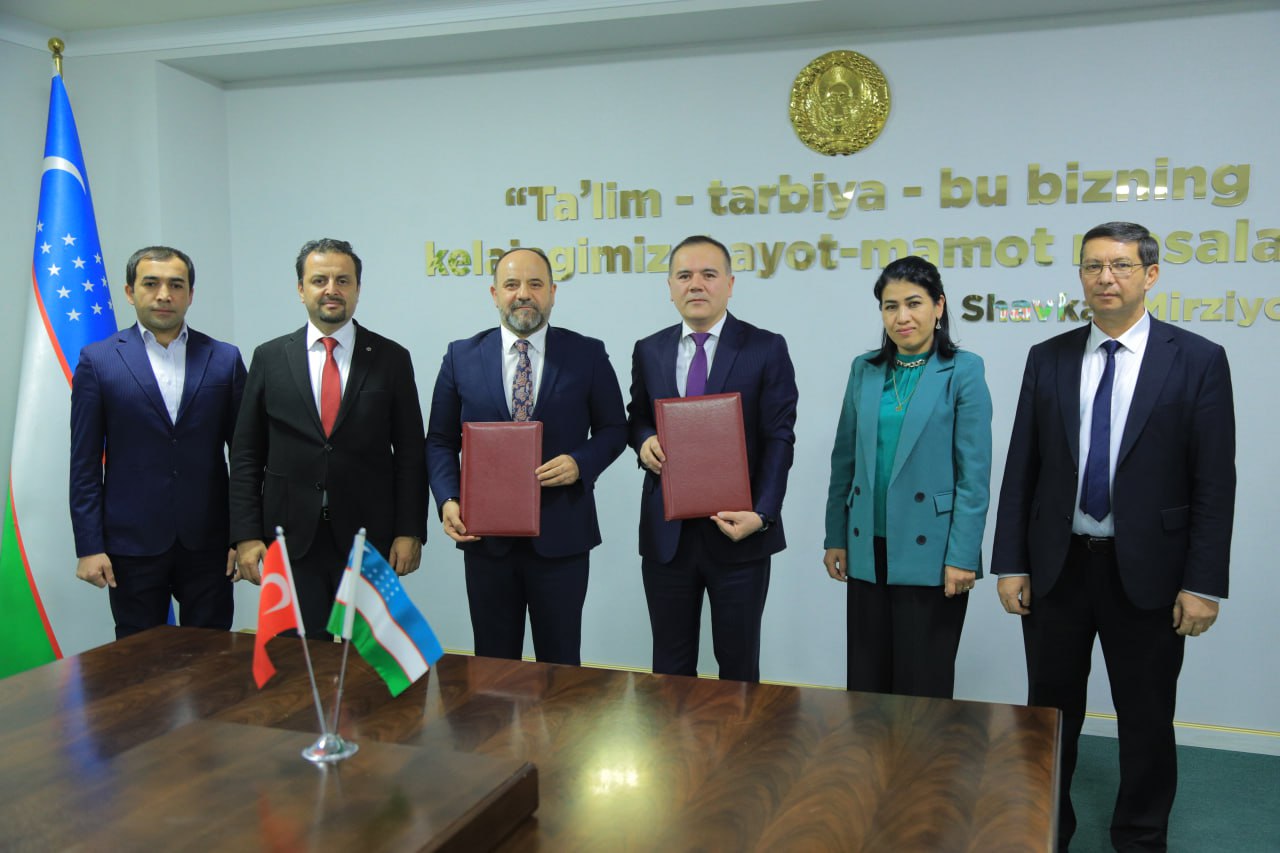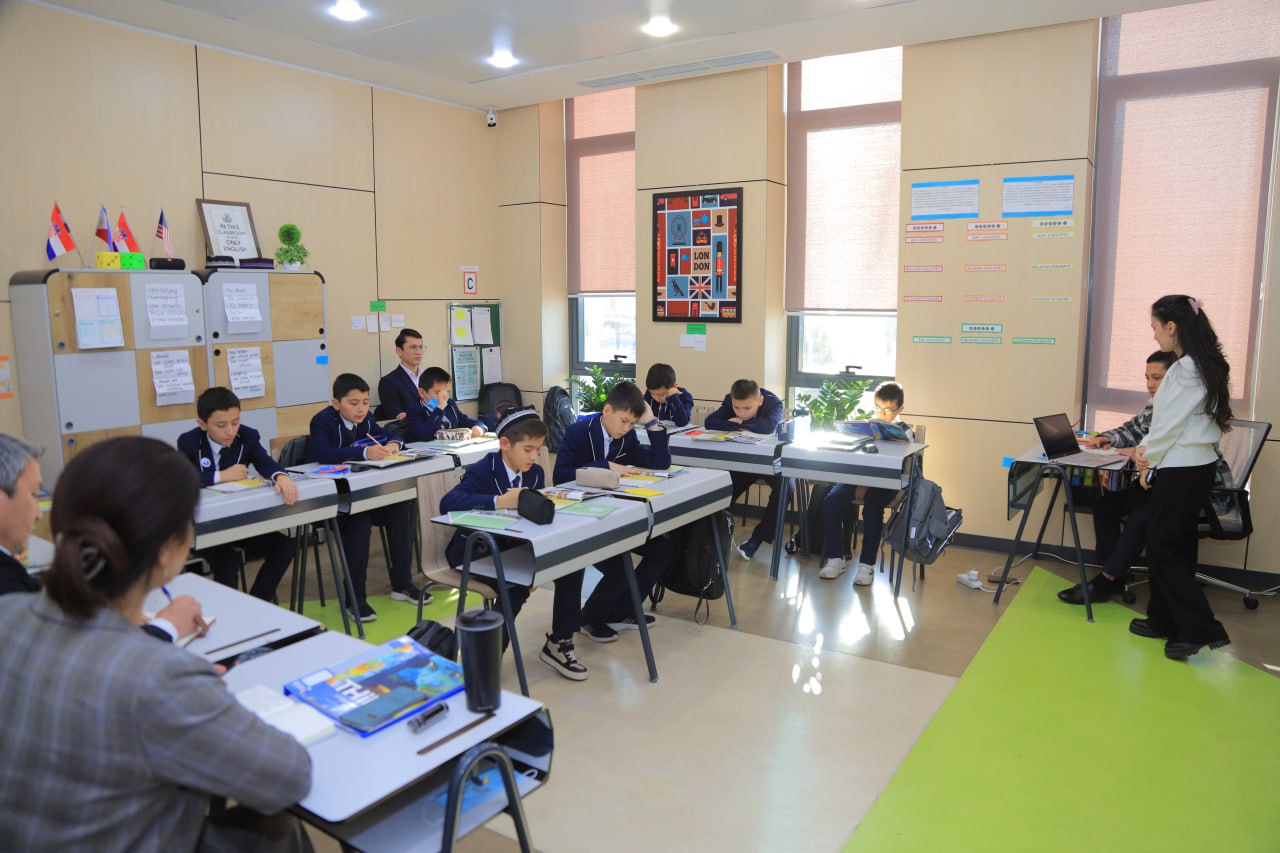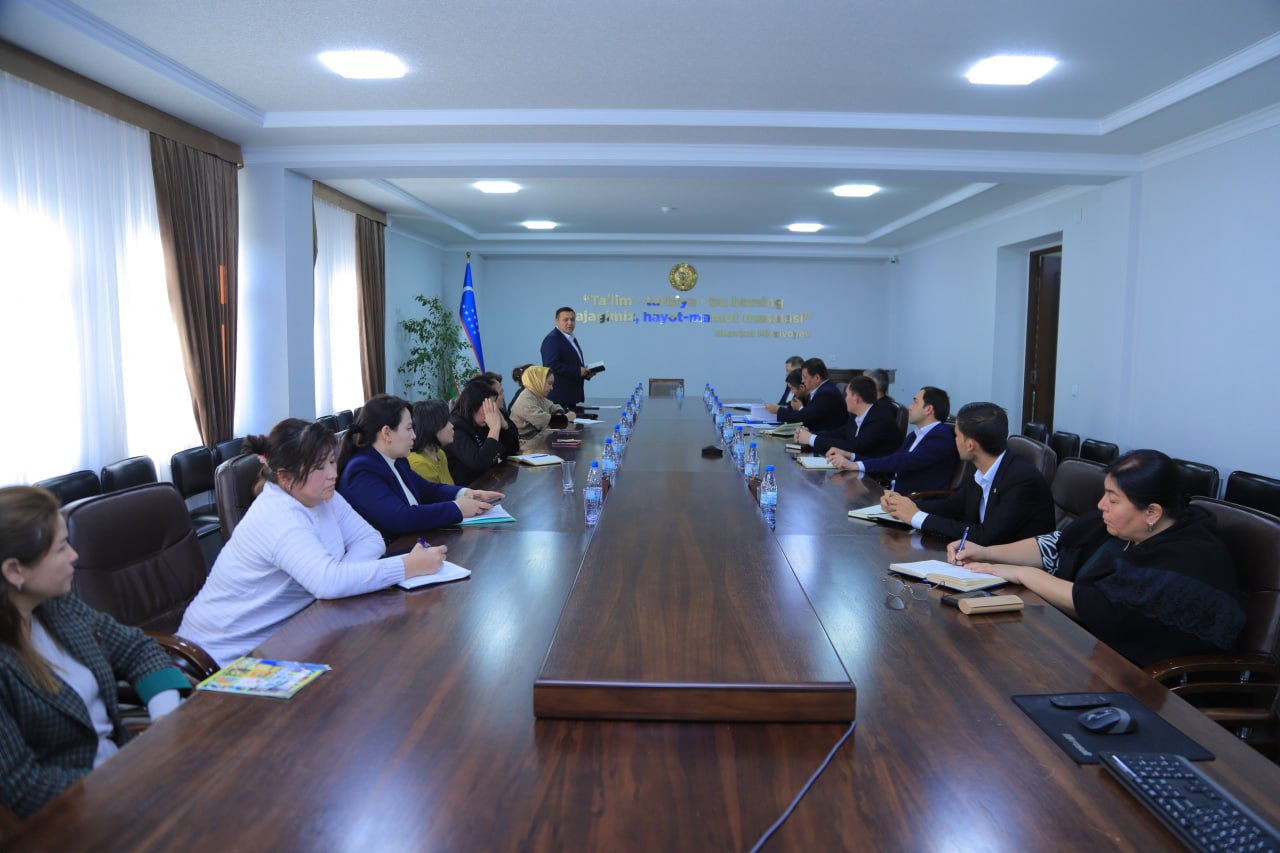Muxamedov Azizbek Xolmurod o’g’li,
Doctor of Philosophy (PhD) in Philological Sciences
Jizzakh State Pedagogical University,
Tilavova Malika Mamaraimovna, Teacher of English
Language Theory and Practice Department,
Jizzakh State Pedagogical University
Abstract: The study points to inquire about neologisms related to certain regions that have not been adequately considered in Uzbek phonetics. In this article, the think about of neologisms related to instruction, medication and economy of a phrased nature, their auxiliary structure and semantic-etymological viewpoints was carried out. Neologisms comprise of one or more words that express one of a kind concepts related to science and innovation within the lexicon of the dialect, are not utilized in a metaphorical sense, don’t have a equivalent word within the dialect, and are frequently internationalized as dialect instruments. When considering the history of the dialect, able to see that numerous words have held their unique meaning in spite of changes, but in a few cases this thing has totally vanished.
Key words: Neologisms, portmanteau (blend words), derived and transferred words, a diffused neologism, smog, brunch, transcription, transliteration, copying, visual translation, anti-vaxxer, mascallergy, super-spreader, twindemic, briefing aids, carrying capacity.
Language is the wealth of society, it enables the interaction of society members increases, gathers and informs about all the events and phenomena that occur in a person’s material and spiritual life.
The lexicon of the Uzbek language is very rich. It contains polysemantic and synonymous, antonymous and formative, emotional-expressive words with a wide range of meanings, which serve to make the speech figurative and attractive. Using the possibilities of our native language and creating beautiful artistic images depends on the artist’s skill in using words. Learning the mother tongue is an extremely urgent task. The highest achievements of human thought, the deepest knowledge and the most fiery feelings, if they are not clearly and clearly expressed by means of words, remain unknown to people. During the following decades, the translation activity in our country, like all other countries, has been developing consistently. In line with it, the quality of translations is gradually improving. One of the factors giving a significant impetus to this is the fact that the theory of translation has been seriously advancing in recent times. At this point, let’s think about the use of neologisms in our country.
First, let’s look for an answer to the question of what a neologism is. A neologism can be a brand new word gaining usage in a language, or a new meaning for a word already in existence. Such a term isn’t typically in common use, but may become so if it is used often. Neologisms can come from a variety of places and might be gleaned from scientific or technical language, come from other languages, be derived by putting two words together, or they may be solely invented, as in the case of words like “Jabberwocky” from the famous Lewis Carroll poem. Linguistic specialists suggest new words often migrate into a language most with great cultural changes or with the integration of two cultures that speak two different languages. Arguably, things like social media may also have great influence on what new words become part of a language.
Linguists regularly classify the neologism by its degree of utilize in a dialect. The infant word is at to begin with unsteady, and it’s difficult to figure whether it’ll take hold and inevitably be a word that most individuals know and utilize. A diffused neologism implies that numerous individuals are utilizing the word, but it doesn’t however have formal acknowledgment as a word, and eventually, in case the word remains well known it may accomplish steady status. It has gotten to be portion of the dialect and is likely to be characterized in dictionaries. There are a few who welcome the neologism as a characteristic prepare of dialect since unused words ended up portion of dialect continually. Others see neologisms as debasements of the central dialect and they may contend against their incorporation, particularly in any sort of formal composing setting. This moment gather more often than not loses the argument because dialect isn’t inactive; it grows or shrivels at all times, and word utilize within the common masses or indeed in the scholarly world doesn’t stay the same. On the other hand, students should be warned that use of a diffused or unstable neologism in academic writing is not likely to be met with favor. If a writing assignment requires formal language, it’s usually not appropriate to use a newly coined word. Ironically, many neologisms come from academia, either from the highly technical language of science or from literature. There’s another definition of neologism that’s utilized in psychiatric pharmaceutical. Words that are made up by those with extreme mental ailment or autism, and are utilized and rehashed by the individuals who make them up, may too be called neologisms. In this case, the words have individual meaning as it were and don’t spread to the common dialect. This behavior is, by no implies, as it were characteristic of the rationally sick. When children learn dialect, they as often as possible make up words as well. Twins may create a interesting lexicon that can as it were be get it by each other, but in most cases this dialect will not spread somewhere else.
The charm of the English language is that it’s constantly evolving, incorporating new words such as selfie, meme and hashtags every day.
Neologisms are of three different types: portmanteau (blend words), derived and transferred words.
Portmanteau or blend words are created by combining existing words. For e.g smog=smoke+fog, brunch=breakfast+lunch.
Derived words are derived from original Latin or Greek phrases. For instance, villa is Latin for house and copious is derived from the Latin copia.
Transferred words use phrases directly from other languages and adjust the spelling or sound to neologise it fully. For example, the word ‘herbs’ is transferred from the French herbes while ‘alligator’ comes from the Spanish el lagarto.
Examples of neologism abound in literature as authors love creating new words. For instance Shakespeare coined ‘bedazzled’. “Pardon, old father, my mistaking eyes, that have been so bedazzled with the sun that everything I look on seemeth green” (Taming of the Shrew). Author Lewis Carroll fans will remember the word ‘jabberwocky’ from his classic Alice in Wonderland. Carroll coined it to a mix of unintelligible words.
We also meet these neologisms related to education. They are: wanna (want to), gotta (have got to / have to), gonna (going to), gimme ( give me), lemme (let me), outta (out of), kinda (kind of ), dunno (don’t know), shoulda (should have).
All this prompts the question: Can anyone create a neologism? The answer is yes. Human beings have a wide range of emotions and all of them don’t have descriptive words yet. However, the reach and usage of the new word subsequent to its creation is what decides whether it is accepted into the English language or disappears into obscurity.
So, how does one coin a new word? Well, you can think of an emotion or idea which doesn’t have a descriptor yet. For example, the thought can be ‘happy about having holidays.’ You can create a new word by blending holiday and happy — ‘hollipy’. “I am feeling hollipy. Exams are finally over.” If students start using hollipy regularly, you could find it making its way into the Oxford dictionary!
In recent years, in the field of medicine, new neologism words have appeared related to the events that happened. They are:
Anthropause- The global slowdown of travel and other human activity due to the Covid-19 lockdown.
Anti-mask / Anti-masker – Term for a person who opposes wearing a face mask during the COVID-19 pandemic.
Anti-vaxxer – A person opposed to vaccination.
Coronavirus – A type of virus that can cause illnesses such as the common cold, or serious diseases such as SARS and COVID-19.
Covid-19 -A potentially severe, primarily respiratory illness caused by a coronavirus and characterised by fever, coughing, and shortness of breath. In some patients, the disease can also damage major organs, as the heart or kidney.
Covididiot– A person who refuses to take the necessary precautions designed to prevent the spread of coronavirus.
Lockdown – The imposition of stringent restrictions on travel, social interaction, and access to pubic spaces.
Mascallergy – The fear of wearing a mask.
Mask acne – acne caused by wearing a mask.
Rat-licker – Someone who does not wear an anti-covid viral mask.
Super-spreader – A person who transmits an infectious disease to a very large number of people.
Twindemic – Possibility of a severe flu season alongside increases in cases of Covid-19
Zoombombing – Zoom is a digital platform for online meetings. As a result of the Covid-19 virus, Zoom is now widely used in social and work settings. Its early versions allowed for low security, and often meetings were “bombed” – disrupted by uninvited people who put up pornographic images or used profanities.
Rona is an informal shortening of coronavirus. Coronavirus is popularly shortened to corona, which was apparently further clipped to rona. Rona is often used as a playful or ironic way to refer to Covid-19, especially when commenting on more relatable, humorous challenges of social distancing during the pandemic.
Cornteen is an intentional misspelling of quarantine, often used in ironic commentary on what it’s like to be at home during the coronavirus pandemic. It may have originated as an actual misspelling of quarantine.
Covidiot – A blend of Covid-19 and idiot, covidiot is a slang insult for someone who disregards healthy and safety guidelines about the novel coronavirus. Some signs of covidiocy are: not washing your hands regularly, hanging out in groups of people, standing within six feet of a stranger at the grocery, hoarding items like toilet paper and hand sanitizer all to yourself.
From the second half of the 1950s, a new era began in the development of economic terminology. This period is characterized by the strengthening of the work of economists on the regulation of economics, the activation of Uzbek word-formation tools, the creation of new terms and their introduction into use. Of course, this development process has its own reasons. In particular, it has become an important task to train local personnel who can independently create textbooks, manuals and dictionaries in the field of economics, and who can regulate field terms. Thanks to such measures, an opportunity was created to regulate economics and economics terminology, and to improve the quality of economics education in Uzbekistan.
In general, economic words and terms are lexemes created over long periods of time. It is known that the economy plays an important role in any society. Therefore, the words and terms related to the economy should be clear, concise and logically based. The issue of nationality and internationality in Uzbek economic terminology is a complex issue, because it is not sufficiently resolved not only in Uzbek, but also in other languages. It is known that the acceptance of the term into the language is a complex process. Because the sound system and grammatical construction of the Uzbek language is very different from that of the language in which the term is used. At the same time, the incoming word or term may not be used in another language in its exact meaning. Sometimes, in the course of the introduction of the term, the meaning changes. It is known that terms differ according to a number of features when they pass from one language to another. In particular, the economic word or term accepted phonetically or in terms of sound should correspond to the sounds of the Uzbek language. Incongruent sounds are dropped or replaced. The lexicon of Russian and European languages makes up the main part of the economic words that entered the Uzbek language. Words and terms coming from the English language are being learned through oral and written speech. Economic words transferred from English to Uzbek can be divided into two groups:
- From the second half of the 19th century to the 20th century.
- From the beginning of the 20th century to the 90s.
And here we can see common neologisms in scientific and technical texts:
A claim for money – pul da’vosi
Abandonment of goods – tovarlarni qoldirish
After-payment – keyingi, qo‘shimcha to‘lov
Balance in hand – naqd pul
Balance of payment – to‘lov balansi
Bank of deposit – depozit bank
Carry out – bajarmoq
Bank certificate – bank sertifikati
Bank confirmation – bank tasdig‘i
Calculation number – hisob-kitob raqami
Calendar year – kalendar yili год
Credit card – kredit kartasi
Draft budget– byudjet loyihasi
Export duty – eksport boji
Entry visa – kirish vizasi
Economic growth – iqtisodiy o‘sish
Foreign market – tashqi bozor
False bankrupt – soxta bankrotlik
Financial statements – moliyaviy hisobot
Basic price – asosiy narx
Briefing aids – ko‘rsatma
Carrying capacity –yuk ko‘tarish qobiliyati
Clearing Bank – hisob-kitob banki
Carrying charge – saqlash qiymati
Scientific and technical neologisms include:
- It is the use of common words that represent many specific fields. In this case, the term is one of the known meanings of this word. For example, the word change is used as a term in the meaning of o’zgartirmoq, ayirboshlamoq, chaqa, mayda pul.
- General technical neologisms are neologisms related to a certain field of science and technology, for example: Account-,hisob-kitob, Accountance balance –buxgalteriya balansi, Advice –bildirish, xabarnoma. The word “advice” means maslahat as well.
- Special neologisms representing a field. For example, bank of circulation – emissia banki, bank of deposit – deposit bank, bank of discount –bank hisobi. In such cases, these neologisms are specific words related to one field.
- In modern technical neologisms, we can encounter neologisms with different meanings in several fields. For example, current density – tok zichligi, oqim zichligi, current price – joriy baho. The distinctive features of neologisms are the striving for uniformity, expressing a specific concept, process or phenomenon.
The rapid development of science and technology has an impact on the fields of education, medicine and economy, as a result of which many new neologisms appear. Students cannot express their opinion clearly and clearly based on the requirements of their field without learning all the neologisms related to their specialty, without having a perfect knowledge of them. Accordingly, future teachers, economists, and medical workers should be thoroughly aware of the peculiarities of the language of their fields. Based on their specialization, our young people contribute to the improvement of the economy, education, medicine and other fields of Uzbekistan, to take a worthy place in the world, protect the interests of our country and demonstrate its strength in foreign countries and in our country.
References:
- Tilavova,M. (2021). THE USE OF THE INVERSION IN THE LITERARY CONTEXT. Turkish Journal of Physiotherapy and Rehabilitation, (pp 35460-35471).
- Tilavova, M. (2021). РОЛЬ ИЗУЧЕНИЯ ИНОСТРАННЫХ ЯЗЫКОВ В ЖИЗНИ ЧЕЛОВЕКА. Журнал иностранных языков и лингвистики, 4(9).
- Ozodov, S. (2018). “ Hozirgi o’zbek tilida neologizmlar”
4.Tilavova, M. (2021). INVERSION IS A BRIDGE TO THE WONDERS OF THE LANGUAGE WORLD. Журнал иностранных языков и лингвистики, 2(3).
5.Tilavova, M. (2020). Language is a bridge to the wonders of the world. Журнал дошкольного образования, (1).
6.Tilavova, M. (2021). The Impact Of Motivation In Learning Foreign Languages. Журнал иностранных языков и лингвистики, 4(9).
7.Cf. Jesperson, O. “Grammar deals with general facts of language and lexicology with special facts”. Philosophy of Grammar.
8.Mamaraimovna, T. M. (2022, January). THE ROLE OF MODERN UZBEK WOMEN IN THE PROSPERITY OF THE MOTHERLAND. In Conference Zone (pp. 226-230).
9.Tilavova, M. M. (2022). THEORETICAL GRAMMAR OF ENGLISH AND THE MAIN DOMAINS OF LANGUAGE IN IT. Mental Enlightenment Scientific-Methodological Journal, 2022(1), 320-330.
10.Tilavova, M. (2021). Variability Of Phraseological Units In English And Semantic Problems In Translation. Журнал иностранных языков и лингвистики, 4(9).
11.Tilavova, M. (2021). The importance of learning a second language and its benefits for the individual. Журнал иностранных языков и лингвистики, 4(9).





